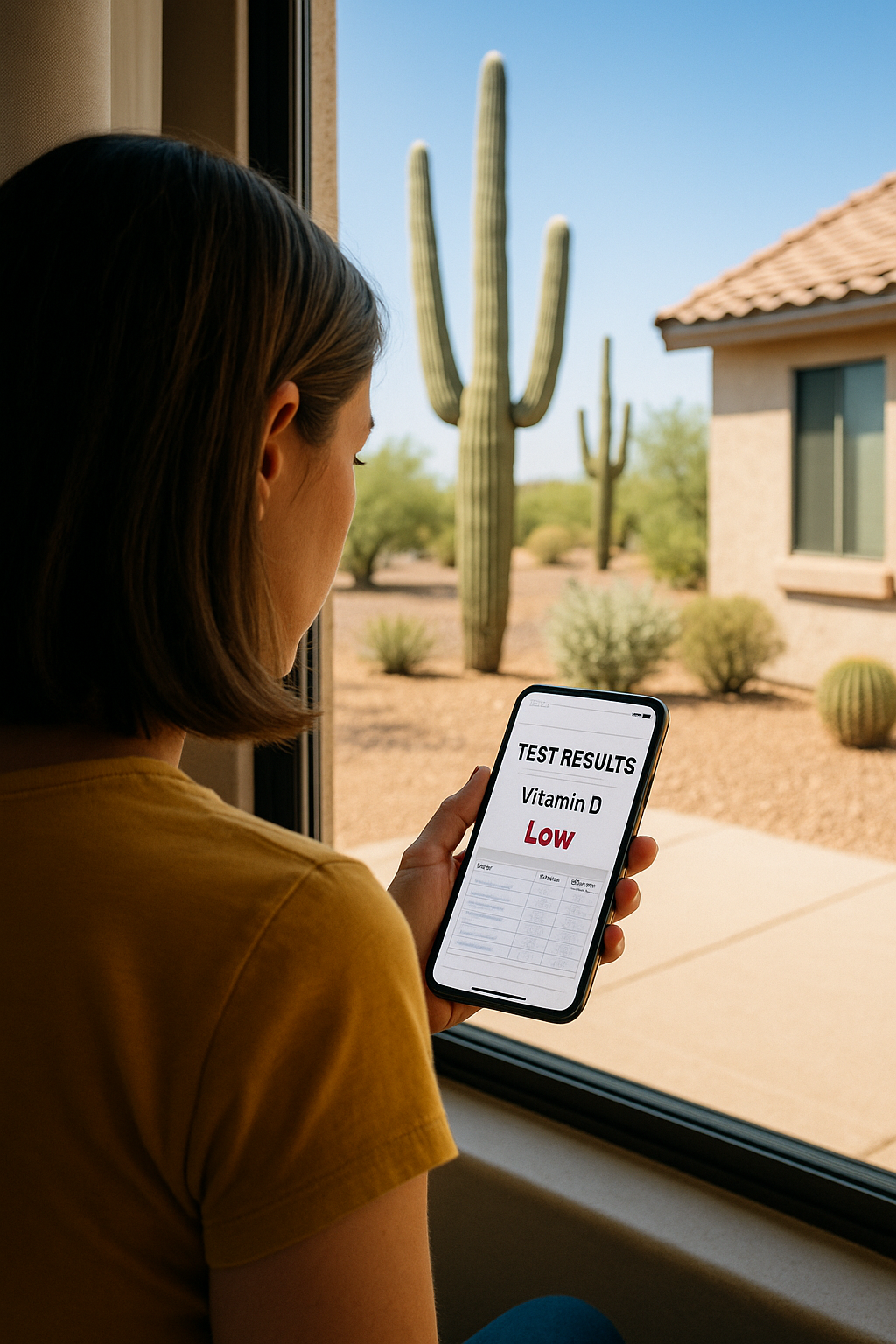Vitamin D Deficiency in Arizona? Here's Why It Happens Anyway
It seems like Arizona’s endless sunshine should be enough to keep everyone’s Vitamin D levels optimal. But in
Queen Creek and across the state, Vitamin D deficiency is surprisingly common. Many people spend most of their day indoors to avoid the extreme heat, use sunscreen when they’re outside, or simply don’t get enough direct sun exposure on their skin. Factors like age, skin tone, and certain medical conditions can also make it harder for the body to produce enough Vitamin D—even in one of the sunniest places in the country.
The Sunshine Paradox
While we have plenty of sunlight, modern lifestyles keep us indoors. Office jobs, long commutes, and digital downtime mean many residents rarely get consistent sun exposure during the parts of the day when sunlight is strongest. Even when people are outside, they often wear hats, protective clothing, or sunscreen to prevent skin damage and reduce the risk of skin cancer. While sunscreen is essential for protecting your skin, it also blocks the UV rays needed for your body to produce Vitamin D, making it harder to maintain healthy levels naturally.
Why Vitamin D Matters
Vitamin D supports bone health by helping your body absorb calcium, which keeps bones strong and reduces the risk of fractures and osteoporosis. It also plays a key role in immune function, helping your body fight off infections. Research shows that low Vitamin D levels can affect mood and have been linked to depression and seasonal affective disorder. Deficiency has also been connected to fatigue, muscle weakness, and a higher risk of chronic illnesses like heart disease, diabetes, and certain autoimmune conditions, making it an important part of overall health.
Who’s Most at Risk in Arizona?
✔ People who stay indoors most of the day
✔ Older adults with reduced skin production ability
✔ Individuals with darker skin tones (melanin reduces UV absorption)
✔ Anyone who regularly wears sunscreen or protective clothing
How to Know if You’re Deficient
The only reliable way to confirm Vitamin D deficiency is with a blood test that measures the amount of 25-hydroxyvitamin D in your blood. Symptoms like fatigue or muscle pain can be caused by many other conditions, so testing is the best way to know for sure.
Mobile lab services make it easy for Queen Creek residents to check their Vitamin D levels without leaving home, saving time and reducing the hassle of waiting rooms or busy clinics. A quick blood draw at home can help you and your provider decide if supplements or other treatments are needed to improve your health.
Take Action
If you feel tired, achy, or have risk factors like limited sun exposure, darker skin, older age, or certain medical conditions, talk to your provider about getting tested. Early testing can help prevent long-term health issues linked to Vitamin D deficiency. Our at-home blood draw service makes the process simple by coming to you, collecting samples quickly and safely, and delivering them promptly to trusted labs that can accurately measure your Vitamin D levels. This means you can get answers and start treatment, if needed, without the stress of going to a busy lab.
Serving Queen Creek and Beyond
OptiVena Mobile Phlebotomy also serves
Mesa,
Chandler,
Gilbert,
Scottsdale, and all surrounding
cities in the valley, bringing professional at-home blood draws and Vitamin D testing directly to your door. Whether you’re managing a busy schedule, have mobility challenges, or simply want to avoid crowded labs, our experienced phlebotomists make it easy and comfortable to get the care you need. We handle everything from routine wellness checks to specialized tests, so you can keep track of your health without the stress of commuting or waiting rooms.
Book Your At Home Lab Draw Here

